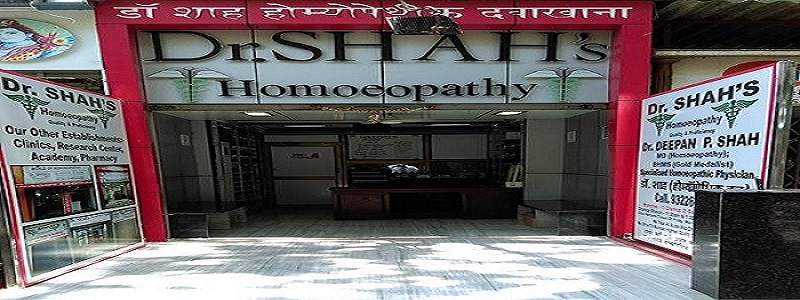Hemophagocytic Lymphohistiocytosis (HLH) is a type of Cytokine Storm Syndrome caused due to uncontrolled proliferation of morphologically benign Macropages and Lymphocytes secreting copious amount of Inflamatory Cytokines resulting into Hyperinflamation.
PATHOPHYSIOLOGY OF HLH
CAUSES OF HLH
Mutations or Single Neuclotide Polymorphism in certain genes gives rise to HLH it can be germ-line defect or may be acquired. There are other factors as well which may cause secondary HLH(sHLH).
- PRIMARY HLH -Primary that is without any other underlying disease in background it is termed as HLH
- SECONDARY HLH (sHLH) – HLH secondary to some other primary underlying disease condition or Iatrogenic factors in the backgroung is termed as Secondary HLH or (sHLH)
DISEASES THAT CAUSE SECONDARY HLH (sHLH)
MALIGNANT
- T-cell lymphoma
- B-cell lymphoma
- ALL – Acute Lymphocytic Leukemia,
- AML – Acute Myeloid Leukemia,
- Myelodysplastic Syndrome
NON-MALIGNANT
AUTOIMMUNE
- Juvenile Idiopathic Arthritis
- Juvenile Kawasaki Disease
- SLE – Systemic Lupus Erythematosus
- Juvenile/Adult onset Still’s Disease,
- RA- Rheumatoid Arthritis
IMMUNODEFICIENCY
- Severe Combined Immunodeficiency
- DiGeorge Syndrome
- Wiskott – Aldrich Syndrome
- Ataxia – Telangiectasia
- Dyskeratosis congenita
INFECTIONS
- EBV -Epstein Barr Virus
- CMV -Cytomegalovirus
- HIV – Human Immunodeficiency Virus
- nCoV2019/SARS-CoV-2 probable
- Certain Bacterias, Fungus and Protozoas
IATROGENIC FACTORS THAT CAUSE SECONDARY HLH (sHLH)
- Bone Marrow Transplant
- Organ transplantations
- Chemotherapy
- immunosuppressive treatment
PATHOGENESIS OF HLH
HLH is caused due to genetic mutations that may be germ-line defect or acquired
Mutation in gene responsible for decoding a proyien protein in Cytotoxic T-cells and Natural Killer cells which killes virus infected is one of the known factor causing HLH
Genes that have been identified as contributor to HLH are UNC13D, STX11, RAB27A, STXBP2, LYST, PRF1, SH2D1A, BIRC4, ITK, CD27, MAGT1 any SNP or mutation in above mentioned gene that causes decfect in ability to kill virus infected cells or damaged cells.
As the Cytotoxic T-cells and NK-cells lose their ability to kill cells infected with virus or other damaged cells, due to mutation of above mentioned genes, consequently results into uncontroled proliferation of immune system secreting excess quantity of cytokines causing excessive accumulation of Interleukine 1, Interleukine 6, Tumour Necrosis Factor-Alpha, Tumour Necrosis Factor-gamma, Plasminogen Activating Factor, Ferritin etc.
Now excess of IL1,IL6&TNF-alpha leads to fever
TNF-alpha and TNF-gamma in excessive proportion aslo leads to suppression of Heamtopoesis resulting into Cytopenia and inhibition of Lipoprotein Lipase to stimulate Triglyceride Synthesis.
Excess of Plasminogen Activating Factor and Ferritin secreted by activated macrophages leads to Hyperfibrinolysis.
SIGNS AND SYMPTOMS OF HLH
In 70% cases the onset is below one year of age.
- Fever, nausea, vomitting, weakness, debility
- Hepatomegaly with fatty infiltration in liver
- Elevated Liver Enzymes
- Icterus and rashes
- Spleenomegaly may also show multiple small granulomas in spleen
- Lymphomegaly may also show calcified nodes
- Erythrocytopenia- Reduced Red blood cells
- Leucocytopenia – Reduced White Blood Cells
- Thrombocytopenia – Reduced Platelets
- Reduced Serum Albumin
- Sphingomyelinase elevated
- Reduced Fibrinogen
- Elevated Ferritin especially in children of above 10000 is very sensitive and specific for HLH, but no so in adults.
- Incresase D-Dimer, CRP and ESR
DIAGNOSIS OF HLH
All patient with Hyperferritinaemia combimed with Cytopenia should be suspected for HLH and soon be considered for further investigations without wasting time.
To be clinically corelated with above mentioned sign and symptom of clinical presentation and investigations and bone marrow biopsy as mentioned below
- Bone Marrow Aspiration and Imprint may show Hemophagocytosis, Cellular Marrow having Dimorphic Maturation with increased Histiocytes and Megakaryocytes
Other Investigations
- CBC – reduced RBC, WBC and Platelets
- CRP elevated
- ESR elevated
- D-Dimer elevated
- Serrum Ferritin elevated
- Liver function Test – liver enzymes elevated
- Ultrasonography of whole abdomen – Spleen, Liver and Lymphnodes enlarged
Homeopathic Treatment and Medicines of HLH
Its a life-threatening condition and one should not waste time even in suspected cases and all patient with elevated ferritin along with cytopenia should soon be sent for bone marrow biopsy and other confirmatory supportive tests and be kept under constant medical observation.
Homeopathic prescription for HLH should be strictly derived on basis of symptom similarity basis and the potency of homeopathic medicines and repetition of doses should be as per susceptibiloty of the patient and disease symptom and severity as per homeopathic principles.
Homeopathic Medicines for HLH
Below are few homeopathic medicines that could be theraputically indicated and may proove useful in cases of HLH.
- Aconitum Nepellus
- Belladona
- Arsenicum Album
- Lycopodium
- Cholestrinum
- Crategus Oxyacantha
- Cinchonna Officinalis
- Ferrum Phosphoricum
- Tuberculinum
- Syphillinum
- Natrum Muriaticum
Homeopathic medicines for HLH should be strictly dispensed under guidance and observation of homeopathic physician
